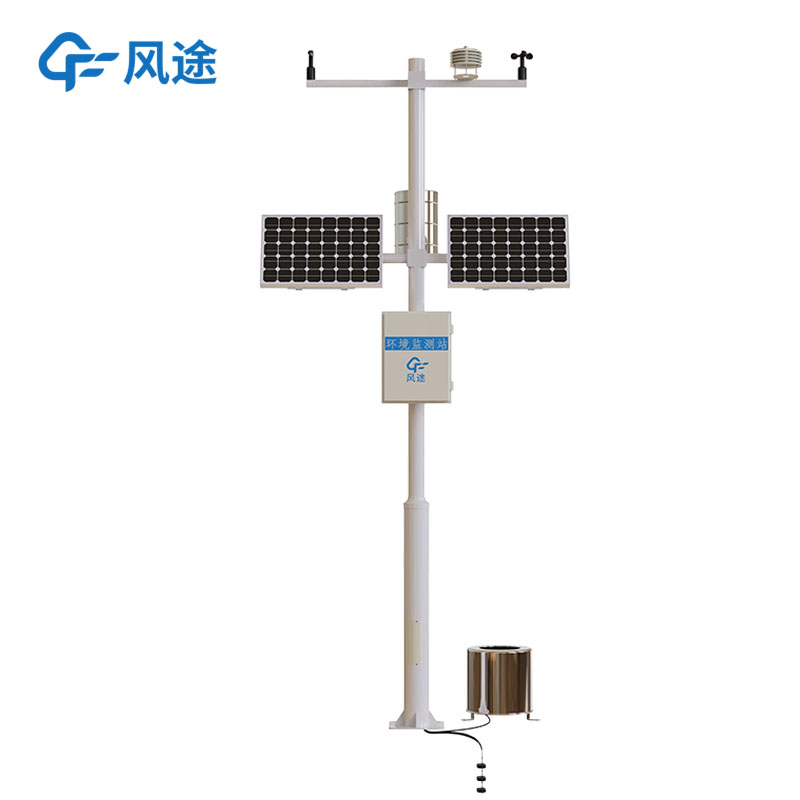Automatic Farmland Weather Station is an instrument commonly used in modern agricultural production. Its main function is to conduct real-time monitoring of various meteorological elements in the farmland environment.
In terms of temperature monitoring, it can accurately measure the field air temperature. Different crops have specific temperature requirements for growth. For example, during the tillering stage of rice, the suitable temperature is usually between 25 - 30℃. The accurate temperature monitoring of the weather station enables farmers to respond in a timely manner when the temperature is abnormal. For example, they can set up sunshade nets to cool down in high temperatures to prevent high temperatures from hindering rice tillering.
For humidity monitoring, taking the filling stage of wheat as an example, the suitable relative humidity is between 60% - 80%. Insufficient humidity may cause wheat grains to shrivel. The real-time monitoring of humidity by the field weather station allows farmers to increase the air humidity by means of irrigation and other methods when the humidity is low, ensuring the normal filling of wheat.
Light monitoring is important for crop photosynthesis. For the cultivation of leafy vegetables such as spinach, sufficient light is conducive to chlorophyll synthesis and leaf growth. Once the weather station detects a lack of light, farmers can consider using artificial light supplement measures, such as installing plant growth lights, to meet the light requirements of vegetable growth.
Wind speed and direction monitoring also affect crop growth. In orchards, such as during the flowering period of apple orchards, a gentle breeze (with a wind speed of about 3 - 4 meters per second) is beneficial for pollen dissemination and can improve the fruit setting rate; while excessive wind speed (exceeding 8 meters per second) is likely to blow off flowers and affect the yield. Wind direction monitoring can help determine a reasonable spraying direction during orchard spraying, preventing pesticide drift and resulting waste and pollution.
Rainfall monitoring is beneficial for agricultural irrigation plans. Taking corn cultivation as an example, the water requirements vary in different growth stages. If the rainfall is abundant, farmers can reduce the number of irrigation times accordingly. The rainfall data recorded by the weather station can assist farmers in accurately judging the irrigation timing, achieving the goal of water-saving irrigation, and at the same time avoiding the poor growth of corn due to water shortage or waterlogging.
Taking the vineyard that our company has recently cooperated with as an example, it can clearly demonstrate the practical value of Automatic Farmland Weather Station.
During the initial growth stage of grapes, suitable temperature and humidity are extremely crucial for the survival and healthy growth of plants. When the weather station detects low temperatures, it can prompt growers to cover plastic film to increase the soil temperature. During the flowering period, the role of light, wind speed and direction becomes prominent. Sufficient light helps the photosynthesis of grape flowers and accumulates nutrients for fruit development; appropriate wind speed and direction promote pollen dissemination and improve the pollination success rate. Before the arrival of rainfall, growers can prepare for the drainage of the vineyard in advance based on the warning of the weather station to prevent root rot. Of course, long-term data accumulation helps analyze the impact of local climate characteristics on grape growth and provides a scientific basis for grape variety selection and optimization of planting management strategies.
All in all, for modern agriculture and protected agriculture, Automatic Farmland Weather Station is extremely useful.
Here, a manufacturer of Automatic Farmland Weather Station - Fengtu is recommended.
First, the manufacturer adopts a self-produced and self-marketed model, reducing intermediate links, reasonably controlling costs, providing high-quality equipment at an affordable price, reducing the cost of agricultural meteorological monitoring, and benefiting various agricultural business entities.
Second, the manufacturer is also equipped with a professional R & D team, closely following cutting-edge technologies and the needs of farmers, continuously innovating and optimizing. The equipment sensors have high precision, can accurately measure a variety of meteorological parameters, and have excellent data accuracy and stability. The wireless transmission technology ensures the timely, fast and stable transmission of data, helping farmers make timely decisions in agricultural affairs.
Third, the after-sales service system is complete. It provides on-site installation guidance. When encountering problems during use, there are professional customer service staff to answer and solve them in a timely manner through various means, allowing users to have no worries.

Article address:https://www.sqqx.net/en/news/480.html

 +86 15898932201
+86 15898932201



